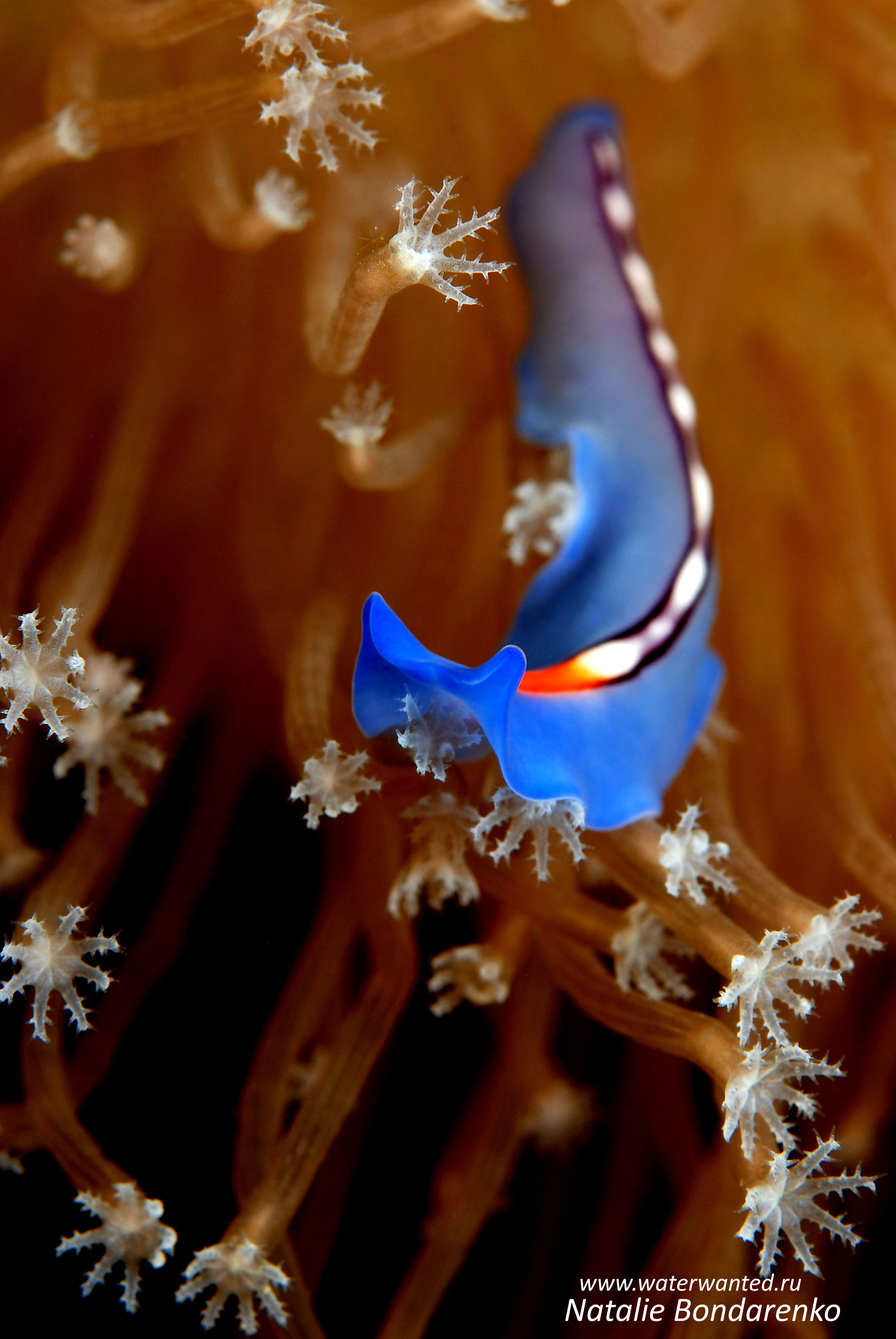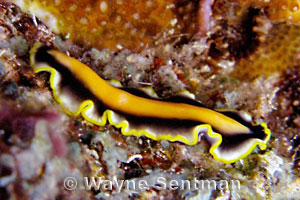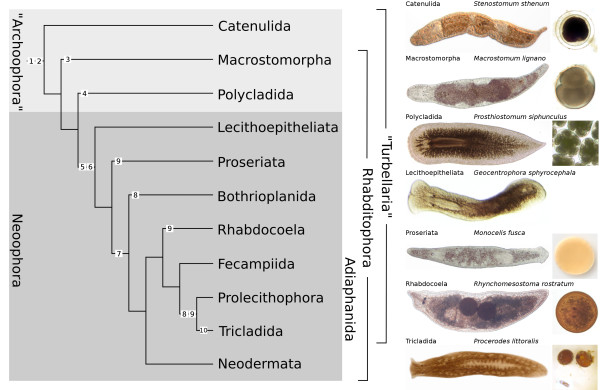Taxonomy
The Breakdown of "Bifurcus"
Bi translates to "two" while furca means fork, relaying to the two dark lines that are on either side of the median strip on the organism.
Domain: Eukarya
Kingdom: Animalia
Phylum:
Platyhelminthes
Class:
Turbellaria
Order: Polycladia
Family: Pseudocerotidae
Genus: Pseudoceros
Species: Pseudoceros bifurcus
Figure 1. Pseudoceros bifurcus image by Nataliya Bondarenko
Classification Clarification
Eukarya includes all organisms with eukaryotic
cells, or cells that have organelles, such as mitochondria. A large
amount of organisms in this domain are seen very regularily. Members
of this domain are either unicellular (like some yeasts),
multicellular (for instance, animals), or colonial (some protists
that undergo cell
division by mitosis).
Its kingdom,
Animalia, hosts a wide variety of
different animals. These animals have a lot of differences and
similarities, including:
- Developing from embryos
- Having an internal cavity (where they digest their ingested food)
- Being motile
- Reproducing sexually with haploid egg and sperm
- Being organized into tissues from cells (with the exception of sponges)
Fig. 2. Pseudoceros bifurcus image by Alain-Benoît Rassat
They are placed in the phylum
Platyhelminthes
along with organisms like
Taenia solium
because of their soft bodies. They share this phylum
with about 25,000 other species of worms, including tapeworms. In Greek, the prefix
platy means "flat" and helminthes means
"worms." Only the  Turbellarians are non-parasitic
worms in this phylum,
which means they are seen as free living. There are about 3,000 Turbellarians species known to man,
such as this
tiger flatworm (pictured to the right), and as far as scientists are concerned, the other three classes of Platyhelminthes derived from
the Turbellarians. Amoung the 12 different orders within this class,
our flatworm falls within amongst the other
Polycladidas.
The origin of this word means "many branches," which pertains to
their branched digestive systems. The organisms in this order are often very colorful and
vibrant, but there are also some that contain less pigment. The
Polyclads are distinguished by having an eversible pharynx and a
complicated set of sexual organs (for more about how Pseudoceros
bicurus reproduces, please click
here). The
Pseudocerotidae
family is distinguished by their prominent tentacles and oval-shaped
bodies. Within Pseudocerotidae, there are many genera; this marine
flatworm in particular belongs to Pseudoceros,
which was discovered 1884.
Turbellarians are non-parasitic
worms in this phylum,
which means they are seen as free living. There are about 3,000 Turbellarians species known to man,
such as this
tiger flatworm (pictured to the right), and as far as scientists are concerned, the other three classes of Platyhelminthes derived from
the Turbellarians. Amoung the 12 different orders within this class,
our flatworm falls within amongst the other
Polycladidas.
The origin of this word means "many branches," which pertains to
their branched digestive systems. The organisms in this order are often very colorful and
vibrant, but there are also some that contain less pigment. The
Polyclads are distinguished by having an eversible pharynx and a
complicated set of sexual organs (for more about how Pseudoceros
bicurus reproduces, please click
here). The
Pseudocerotidae
family is distinguished by their prominent tentacles and oval-shaped
bodies. Within Pseudocerotidae, there are many genera; this marine
flatworm in particular belongs to Pseudoceros,
which was discovered 1884.
- Fig. 4. Phylogenic tree of the phylum Platyhelminthes, from evodevojournal.
The Platyhelminthes phylum is broken down in the tree in fig.1. Pseudoceros bifurcus belongs in the Polycladida order. It shares a most common recent ancestor with the orders Lecithoepitheliata and Macrostomorpha. What sets Polycladida apart from the other groups is that the organisms within it are able to produce larvae. The Catenulida, Macrostomorpha and Polycladida are all apart of a group called Archoophora and the other orders are grouped into a group called Nephora.
This phylogenetic tree maps the relationships between the organisms in the Pseudocerotideae family. Our organism falls into the category Pseudocero bifurcus, with the red square around it. The other species most related to our organism is the Pseudoceros bicolor, the two-colored flatworm, because they share the closes common ancestor. The second closest related species to our organism is the Pseudoceros paralaticlavus, otherwise known as the goldrim flatworm.
Continue to learn about this flatworm's habitat
References | Home
